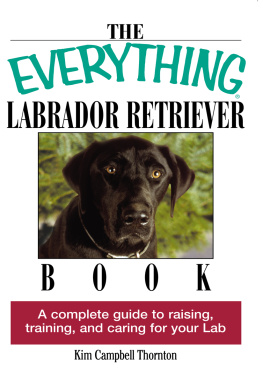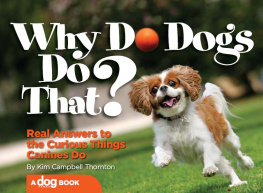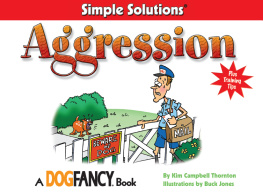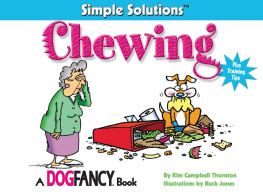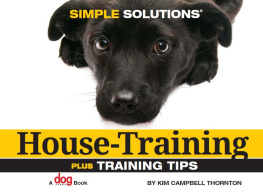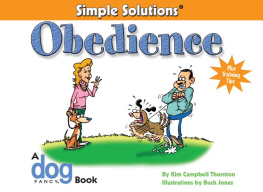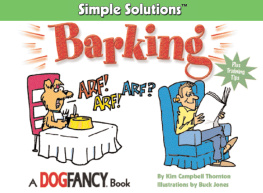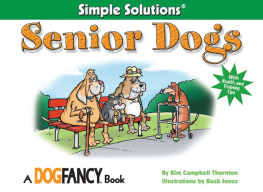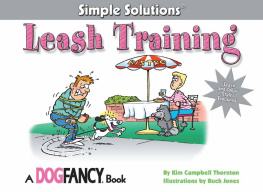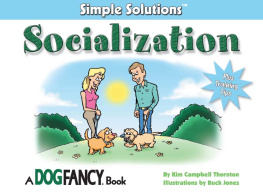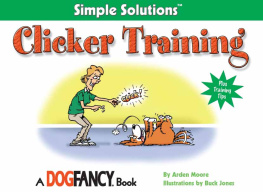Karla Austin, Business Operations Manager
Jen Dorsey, Associate Editor
Michelle Martinez, Editor
Rebekah Bryant, Editorial Assistant
Erin Kuechenmeister, Production Editor
Ruth Strother, Editor-at-Large
Nick Clemente, Special Consultant
Michael Vincent Capozzi, cover design
Vicky Vaughn, interior design and layout
Copyright 2004 by I-5 Press
Illustrations copyright Buck Jones
All rights reserved. No part of this book may be reproduced, stored in a retrieval system, or transmitted in any form or by any means, electronic, mechanical, photocopying, recording, or otherwise, without the prior written permission of I-5 Press, except for the inclusion of brief quotations in an acknowledged review.
Library of Congress Control Number: 2003114518
ISBN: 1-931993-27-0
eISBN: 9781620080801
I-5 Press
A Division of I-5 Publishing, LLC
3 Burroughs
Irvine, CA 92618
Printed and Bound in Singapore
10 9 8 7 6 5 4 3 2
Contents

The Secret to Successful House-Training
Puppies pee. And poop. A lot and often. If youve never lived with a puppy, youd be amazed by the number of times the little furballs need to go potty. Every hour or two, they start sniffing and circling, looking for a place to do their business. If owners arent watchful, accidents can frequently happen.
Not surprisingly, house-training is the first lesson new owners want to teach their pups, and rightfully so: House-training is the foundation for good behavior. Without it, dogs cant become members of the family, and they run the risk of being exiled to the backyard, never getting the attention and social interaction that they need and deserve.

Happily, the secrets to successful house-training are simple: Time, patience, consistency, and supervision are all thats needed. Puppies are quick learners. A regular potty schedule, combined with praise for going in the right spot, and theyll soon get the idea. Dogs are naturally clean animals, and they dont want to soil their living area. House-training teaches dogs that the house is the living area and the yard (or whatever spot you choose) is the potty area.
How Long Does it Take?
Just as with children, potty training a puppy is a process. Its not something a puppy can learn in a day, or even a week. While it might take only a few weeks for your dog to understand what you want, until hes four to six months old, hes not physiologically capable of holding it for more than about four to six hours. A dogs muscle control isnt fully developed, and his bladder is not large enough to hold it any longer than that.

Remember that each dog is an individual. Some pups are potty trained at three months, while others may not be completely reliable until theyre nine months to one year old.
A number of breeds are more difficult to house-train than others, including: many toy breeds, such as Chihuahuas, Yorkies, papillons, Chinese cresteds, Italian greyhounds, shih tzus, and poodles, especially the smaller ones; the bichon breeds, such as bichon frise, Maltese, Havanese, and Bolognese; various hounds, including beagles, Afghan hounds, salukis, harriers and foxhounds; Jack Russell terriers; and soft-coated wheaten terriers. These dogs need extra supervision and a lot of positive reinforcement.
If you acquire your puppy at eight weeks of age, expect to take him out at least six to eight times a day. By the time hes about six months old, potty trips will be down to three or four times a day. A rule of thumb is to take your puppy out in hourly intervals equal to his age in months. For instance, a two-month-old puppy should go out every two hours, a four-month-old every four hours, and a six-month-old every six hours. This can vary, of course, depending on the individual dog: Some young puppies need to go out every half-hour. Its your responsibility to make sure that your puppy gets plenty of opportunities to go potty in the right spot.
Other good rules to follow include taking your pup out first thing in the morningyes, even before you have your first cup of coffeeand ten to thirty minutes after every meal, when he wakes from a nap, after every playtime, and the last thing at night, just before he goes to bed.
Thats a lot of dog walks. What if everyone in your family works or goes to school? Those things are important but so is your puppys potty schedule, especially for the first couple of weeks hes with you. Without a schedule, your puppy cant learn what he needs to know. Try to get home once or twice during the day, hire a dog walker or pet sitter, or ask a friend or neighbor to take your dog out. Try taking time off work during the first week of house-training to firmly establish the schedule and rules in your pups mind. Its helpful to start training on a weekend or during a long holiday.

How Do I House-Train My Puppy?
Start house-training your puppy as soon as you get him home. Even before you bring him into the house for the first time, take him to the potty spot youve chosen, and let him sniff around. Make note of any patterns of sniffing, circling, and squatting. These are his clues that he needs to go out. If he performs, praise him in a happy tone of voice, Good potty! Then take him inside, and introduce him to his special place, which can be a crate.
Dogs develop preferences for certain potty surfaces, usually based on what they learn as a puppy. Its a good idea to expose your pup to different potty surfaces such as asphalt, concrete, and gravel so that if you dont have access to grass, you wont have a problem getting him to go.
Young puppies should not have the run of the house. Before you bring your puppy home, choose a safe area of the house to let your pup stay. This is usually a kitchen, laundry room, bathroom, or some other area with an uncarpeted floor. Rooms with tile, vinyl, or concrete floors are good choices.


Lay down papers in this room (this is not paper-training but simply an easier way to clean up messes). Put your pups open crate, a couple of chew toys, and a food and water dish at the opposite end of the room. Close off the room with a baby gate or other barrier to prevent him from wandering throughout the house. Until your puppy is house-trained, he needs to be under your direct supervision or confined to an area where he cant get into trouble.
The goal is for your pup to eliminate away from his crate and eating area whenever you arent there to take him out. Once your pup is consistently eliminating in a certain spot on the papers, you can gradually take up the papers, leaving only the favored area covered.
If you come home and your pup has pottied in the safe room, dont scold him. Hes just doing what comes naturally. Take him outside and praise him when he potties in the chosen spot. If you take him to the same area every time, the lingering scent will prompt him to go again.
Next page

